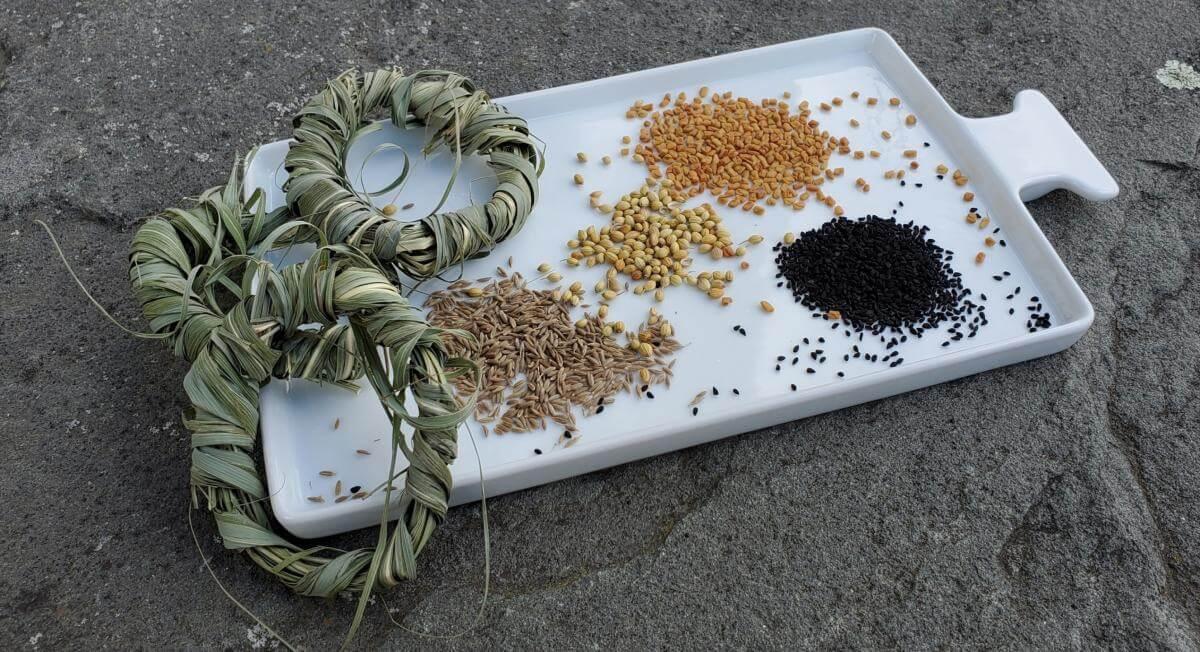By Andrea Knepper
Extension Master Gardener Intern
University of Vermont
Are you interested in trying some new recipes from around the world? Have you looked at an Indian, Thai or Japanese recipe and not known where to find the ingredients? Many of the herbs, spices and vegetables, such as hot peppers, used in these culinary traditions can easily be grown in your home garden.
Hot peppers are a staple in many cultures, and there are many varieties from which to choose. They can be included whole or chopped while cooking to infuse heat. Hot peppers can be added to sauces and fermented. You also can dry them and grind them into chili powder.
Cayenne peppers are a versatile choice. For even more spice, try Thai bird's eye peppers. To accent your noodle and rice dishes, thinly slice any of these hot peppers, and soak in soy sauce. Spoon the soy sauce over your meal for a spicy, savory flavor.
You often can find ready-to-plant starts at your local garden center. Or next year, as with other peppers, you can start seeds indoors about 8-10 weeks before your last spring frost date.
To find that date, visit the National Gardening Association's website at https://garden.org/apps/frost-dates. Many garden and seed company websites also have online calculators where you can enter your zip code to determine the average date of the first and last frost in your area.
For a nice addition to salads, grow cumin (Cuminum cyminum). Both the leaves and foliage are edible. This spice prefers direct seeding but requires a long growing season to fully form seeds. So, in future years, you may want to start the seeds indoors eight weeks before your spring frost date and then transplant the seedlings.
Coriander (Coriandrum sativum) is the seed of the common herb, cilantro. You can sow this directly in the garden after your frost date.
Let your cilantro form flowers and mature to seed. Harvest the seeds once dry and use whole or grind into coriander powder. If you don't use all the seed you harvested before the next growing season, you can plant them for another crop.
One plant that can be grown as a vegetable or for seed is fenugreek (Trigonella foenum-graecum). You can eat the shoots and leaves fresh or dried. Fenugreek seed can be harvested from the pods and is essential for many Indian recipes. To temper the bitterness of the seed, soak overnight.
Lemongrass (Cymbopogon citratus) is a fun tropical grass that thrives as an annual if you have a hot, sunny spot. It also does well when grown in a container.
When the base of the stalk has filled out, pick the whole stalk and remove the tough exterior to expose the tender heart. Use it fresh or frozen, whole or sliced. Fresh or dried leaves also make a nice tea.
If you like Asian cuisine, consider planting Shiso (Perilla frutescens). This is another herb that can be sown directly the garden although it is slow to germinate. For best results, plant in full sun. Shiso, the Japanese name for an annual herb called perilla, can be eaten raw, cooked or pickled.
Be aware that this herb readily self seeds and can become invasive. You can prevent this by removing flowers before they form seeds.
Nigella sativa is a relative of the popular flower love-in-a-mist (Nigella damascena) with similar, attractive flowers and seeds essential to Indian cooking. Harvest the seeds before the dry seed pods open. The subtle, herb, onion flavor is delicious as a garnish on baked goods, vegetables, fish, salads or just about everything.
All of these are easy to grow and are becoming more available at local garden centers and through online seed suppliers. Save a sunny spot in your garden and try something new this year!
